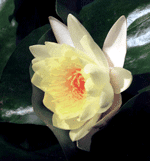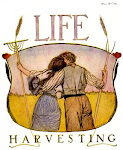"The shadow gone autonomous is a terrible monster in our house..."
The Shadow by Robert Johnson
As children most us learn that you can't spit into the wind or throw sand into the wind; you get back the same result: it flies into your own face! But somewhere along the way to adulthood we seem very often to forget this truth. Many of us seek to level our relations with others by these very means. There are relatively few facts in the world; most are about nature herself. For example, day follows night and night evolves again into day; there is the sun and the moon and all the seasons exerting their force and pull upon earth and its inhabitants.
There are airplanes, and then there are pilots; drivers who drive cars; wind and ice which foils them, sometimes with injurious or deadly results. We like to think of our self as master of all, in control. The sad fact of physics is that often we aren't. For many this provokes a deep anxiety or unconscious dread. We are protective, even defensive of ourselves and our positions. This often leads to a sort of self blindness, not unlike that experienced by the Emperor in the Hans Christian Anderson story, The Emperor's New Clothes. Regular readers here will recognize the theme...
Simple acknowledgment of our desire to make things safe for our self in relations with others goes a long way to enlightening the mind.
In the spiritual life, we seek to find a unity with these unacknowledged parts of ourselves, parts which often riotously erupt at sometimes the most inopportune, the most inconvenient moments. For some the solution, at least temporarily, is to squelch or sequester these emotions, this energy out of sight and effectively, out of mind.
"In the cultural process, we sort out our God given characteristics... we begin to divide our lives." This process Robert Johnson calls, 'shadow making' in his book, Owning Your Own Shadow.
Without some measure of self-regulation, routine social interactions would become potentially very messy on a very regular basis. However these now "forgotten" traits don't often slink away; instead they lay in wait for another time. Lying in the darkness of the anterior mind, the shadow strength builds. In some it provokes deep depression or anxiety, in others a general mental disorder.
There is the sorting process which we think of as culture, by which the facets of the accepted and unaccepted self are rendered either active or passive; the active parts we think of as personality and the inactive become unknown, or from time to time emerge as 'bad manners' which culture seeks to rope in and regulate.
Yet this sorting process is "quite arbitrary," Johnson observes. For the spiritual growth of a person in mid-life, the two must reconnect for a balance, for unity to arise.
The Hindus for example, acknowledge the presence of the gods of creation and destruction simultaneously. In Hinduism, the balance of these natural forces is called Ananda.
In the west, the word we use to describe this same process is religion, from the Latin, it means to re-relate, to put back together again, to restore. It is in this move towards restoration that our spiritual selves find rest, peace and balance of the whole.
The Shadow by Robert Johnson
As children most us learn that you can't spit into the wind or throw sand into the wind; you get back the same result: it flies into your own face! But somewhere along the way to adulthood we seem very often to forget this truth. Many of us seek to level our relations with others by these very means. There are relatively few facts in the world; most are about nature herself. For example, day follows night and night evolves again into day; there is the sun and the moon and all the seasons exerting their force and pull upon earth and its inhabitants.
There are airplanes, and then there are pilots; drivers who drive cars; wind and ice which foils them, sometimes with injurious or deadly results. We like to think of our self as master of all, in control. The sad fact of physics is that often we aren't. For many this provokes a deep anxiety or unconscious dread. We are protective, even defensive of ourselves and our positions. This often leads to a sort of self blindness, not unlike that experienced by the Emperor in the Hans Christian Anderson story, The Emperor's New Clothes. Regular readers here will recognize the theme...
Simple acknowledgment of our desire to make things safe for our self in relations with others goes a long way to enlightening the mind.
In the spiritual life, we seek to find a unity with these unacknowledged parts of ourselves, parts which often riotously erupt at sometimes the most inopportune, the most inconvenient moments. For some the solution, at least temporarily, is to squelch or sequester these emotions, this energy out of sight and effectively, out of mind.
"In the cultural process, we sort out our God given characteristics... we begin to divide our lives." This process Robert Johnson calls, 'shadow making' in his book, Owning Your Own Shadow.
Without some measure of self-regulation, routine social interactions would become potentially very messy on a very regular basis. However these now "forgotten" traits don't often slink away; instead they lay in wait for another time. Lying in the darkness of the anterior mind, the shadow strength builds. In some it provokes deep depression or anxiety, in others a general mental disorder.
There is the sorting process which we think of as culture, by which the facets of the accepted and unaccepted self are rendered either active or passive; the active parts we think of as personality and the inactive become unknown, or from time to time emerge as 'bad manners' which culture seeks to rope in and regulate.
Yet this sorting process is "quite arbitrary," Johnson observes. For the spiritual growth of a person in mid-life, the two must reconnect for a balance, for unity to arise.
The Hindus for example, acknowledge the presence of the gods of creation and destruction simultaneously. In Hinduism, the balance of these natural forces is called Ananda.
In the west, the word we use to describe this same process is religion, from the Latin, it means to re-relate, to put back together again, to restore. It is in this move towards restoration that our spiritual selves find rest, peace and balance of the whole.





